What is Valuable Content?
Readers must find value in your content to read it, return to your website, and become loyal customers. But what makes content valuable? What is valuable content? These are excellent questions that depend somewhat on your market, but there are some common traits of valuable content.
Content Journey helps our clients create valuable content that serves their audiences with the information they need, resulting in millions of dollars in sales each year. We know how to create valuable content, and our clients’ successes prove it.
In this post, we’ll explain what valuable content is and how to know if you’re providing your audience with it.
What is Content Marketing?
Before we get into the nitty-gritty about value, let’s ensure we have a mutual understanding of content and content marketing. If you already have a solid grasp of these concepts, feel free to skip to the next section.
Content marketing is creating and sharing content that helps you connect with your target audience by serving their information needs. Instead of explicitly promoting your brand, you distribute relevant and helpful content related to your business and industry to stimulate interest.
Content marketing boosts your business’s online visibility and helps you develop relationships with clients and potential clients. If your content is effective, you’ll become a trusted expert in your field.
The content used in content marketing comes in various forms. It includes blog posts, service pages, videos, infographics, case studies, podcasts, webinars, and social media posts.
Regardless of the format, you want your content to provide value to your audience, which will encourage them to come back for more, establish you as an expert in their minds, and entice them to become loyal customers of your brand.
What is Valuable Content?
Valuable content is whatever your reader says it is. It’s content that serves them and meets their needs, whatever those may be. Value can be a moving target because it’s not the same for everyone, but that’s why you don’t create content for just anyone. Your focus should be on making your content valuable to your target audience. Anyone else who finds it worthwhile is just icing on the cake.
Traits of valuable content:
- Useful. Can your target audience use the information in their lives? Can it help them make a decision or solve a problem?
- Entertaining. Even useful content won’t get attention if it’s boring. Think about how you can entertain your audience while helping them.
- Timely. Nothing’s older than yesterday’s news. Your content needs to be up-to-date and serve your audience in their current situation. Readers will view outdated information as what it is.
- Focused. Your audience wants content that’s focused on them. It should speak to them and their needs.
- Credible. You can’t help people with content if they don’t trust you to get it right. Your content must come from a place of knowledge and expertise.
- Clear. Have you ever tried to assemble something just to realize that you need instructions for the instructions? It seems like steps are missing, or you can’t understand the words they’re using. Your content must be clear and relatable to serve your audience. They have to be able to understand it to use it.
4 Types of Valuable Content Your Audience Wants
When creating content for your blog, you always want to keep in mind the type of information your audience wants and needs. The great news is that audiences have similar wants and needs regarding the content they consume. They’re essentially looking for four things in the content they read. If your content hits all four of these points, even better.
1. Educational Content
People often Google for information because they want to understand a topic better or learn how to do something. Usually, they seek informational support to help them solve a problem. Educational content helps your audience accomplish their knowledge goals by learning more about and understanding a topic. How-tos like the one shown below are some of the most popular educational content online.

2. Entertaining Content
People want to be entertained by the content they read online, even when they’re trying to learn something. Think about it… otherwise, they might just look at a user manual. People want content presented to them in a way that piques and keeps their interest. Interactive content is a great way to keep your audience entertained and engaged with your brand.
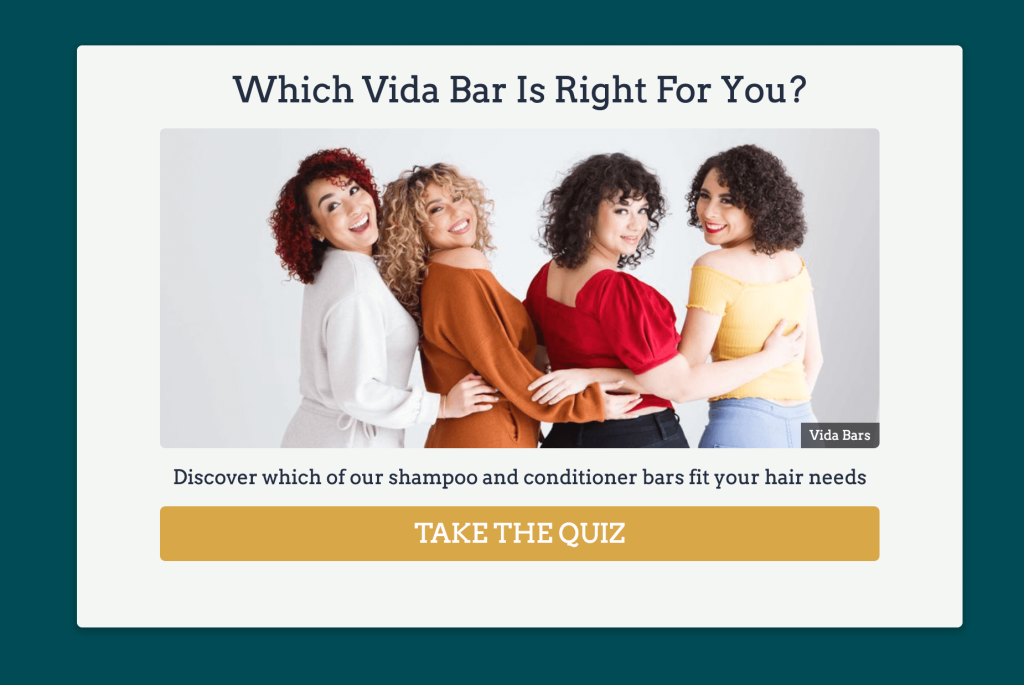
For example, if you visit The Vida Bars website because you think you may be interested in purchasing their hair care products, you’re met with a pop-up quiz. The interactive quiz helps you engage with the site to discover which bars are best for your hair type. It’s short, fun, and persuasive.
3. Inspiring Content
Inspiring content helps people see the possibilities in what they can do with the knowledge or information they learn online. Whether it’s redecorating a space to fit you perfectly or kicking your vaping habit, inspiring content lets you glimpse what the future could hold.
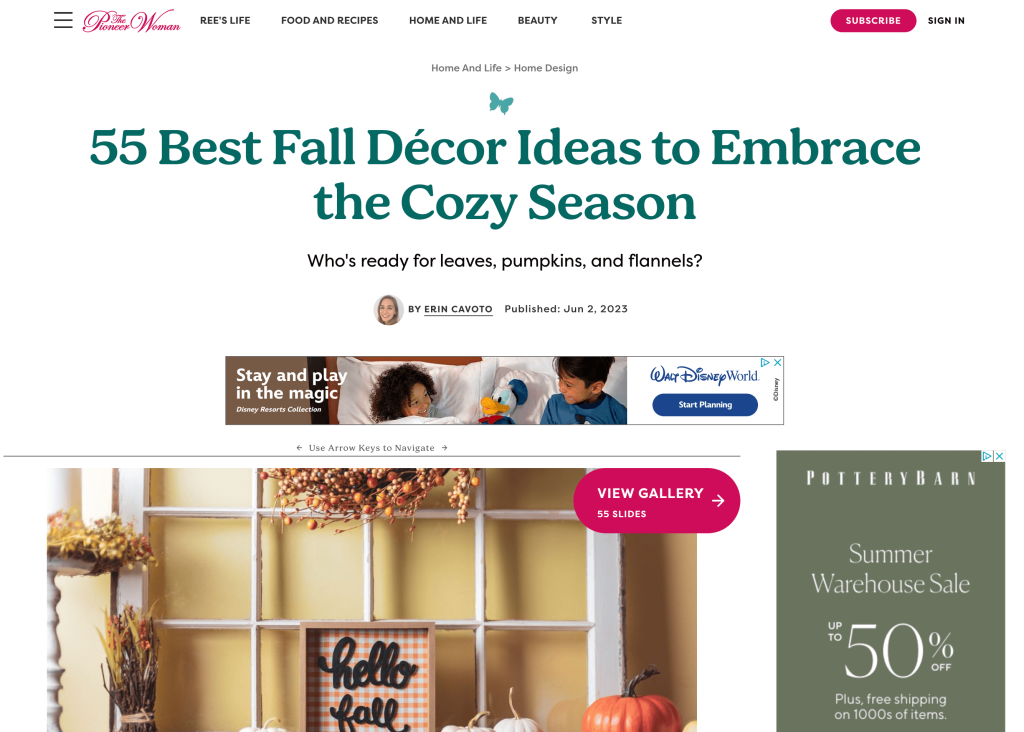
Yes, Pioneer Woman, we’re ready for the cozy season and easy DIY.
4. Convincing Content
No matter how attractive your website is or how good your brand is, people won’t stay on your site or revisit it if the content isn’t appealing to them. People want to be convinced. They want to see authority in the content on your site and know they can trust you to help them with whatever their concern is. That’s why they look for convincing content.
Answering the why question, like in the post shown below, is a great way to create convincing content.
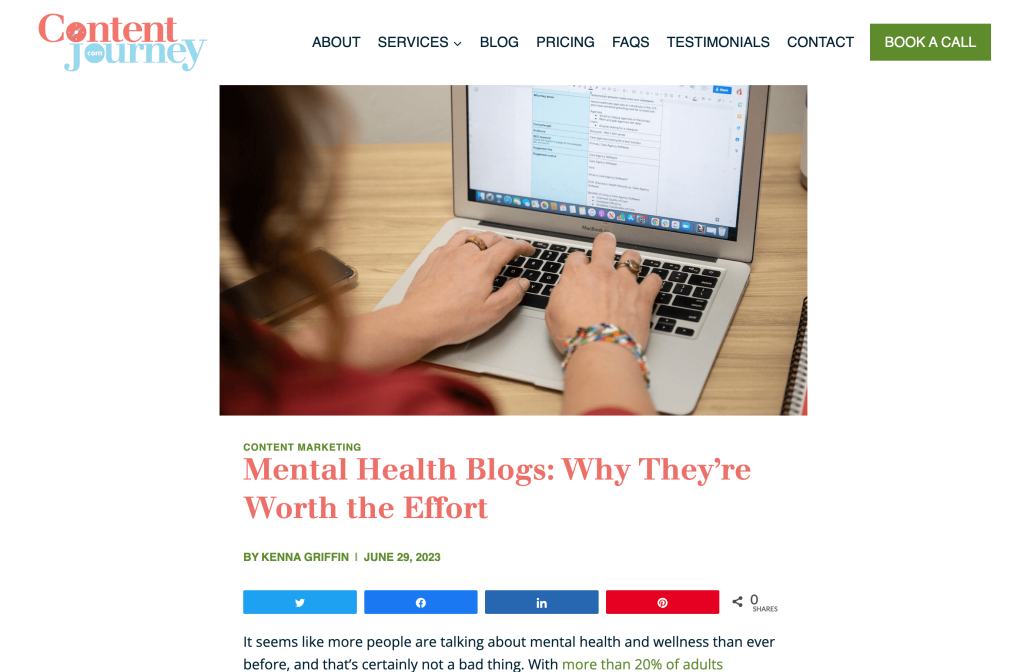
The best content marketing is all four of these things and speaks directly to your audience’s wants and needs. It establishes you as an expert authority in your industry and your brand as the key to the outcomes they desire.
How to Create Valuable Content
Now that you understand why you need content and what gives content value let’s focus on creating valuable content. Here’s what you need to know and understand to make that happen.
Understand Your Audience
You can’t create content that your audience values if you don’t clearly understand who they are and what they need. Perform audience research to understand your digital marketing target audience. Understand who they are, where they come from, how they make purchasing decisions, what questions or concerns keep them up at night, and what they search for when they’re online looking for solutions. You can never know too much about your audience. Also, know intimately why and how your brand solves their problems. Be able to make this connection in their minds readily.
Know Your Industry
People are looking to you for information they don’t have. You must have a clear understanding of your industry and business. You need to know your stuff better than anyone else, including your competitors. And you have to be able to communicate the link between your target audience’s needs and your product or services.
Don’t forget to confirm your brand authority in your audience’s mind. Do you remember how frustrating it was when your parents said, “Because I said so”? Never make your audience take your word for it. Back up the information you provide with data, examples, and quotes.
Communicate Simply
Regardless of how you deliver content, you must ensure your audience can understand it. That means writing and speaking clearly. It also means you must communicate in simplified terms and anticipate the audience’s questions before they can even ask them. The more easily understood and useful your content is, the more valuable it is to your audience.
Be Comprehensive
People don’t want to read a bunch of different blog posts or watch repeated videos to get an answer to their questions. They want to go to one place and get all the necessary information. That’s why the more comprehensive you can be about a topic, the better. Make your blog post a one-stop resource on every topic you write about.
Focus on Readability
A blog post isn’t a book. People want to get the information they need in a simple, scannable way online. The average person spends about 50 seconds reading a blog post. Yep. You spend more than four hours writing it, but it’s only effective if they can power scan it.
To make blog posts readable:
- Write a Catchy Headline. The headline will determine whether they even choose to click on the post. Check out our post on how to write the perfect blog title to learn more.
- Write in Active Voice. Active voice is the most engaging.
- Use Short Paragraphs. No more of that five sentences to a graph rule you learned in English class. An online paragraph can be just one sentence. Write one thought per sentence and one concept per graph. Break up any big blocks of text with subheads, lists, or visuals.
- Use Bulleted Lists. See how easy they are to read?
- Provide Subheads. Headers help break up the text and make it easier for readers to scan.
Provide Perspective
You probably aren’t writing about anything on your blog that hasn’t been written about before. So, what makes your posts unique? Your perspective. Writing from your point of view helps your blog stand out from others and makes readers prefer getting information from you.
Perspective also is personality. If people wanted to read an encyclopedia entry on a topic, they would. Instead, they look to you for perspective, complete with examples and context. Give it to them.
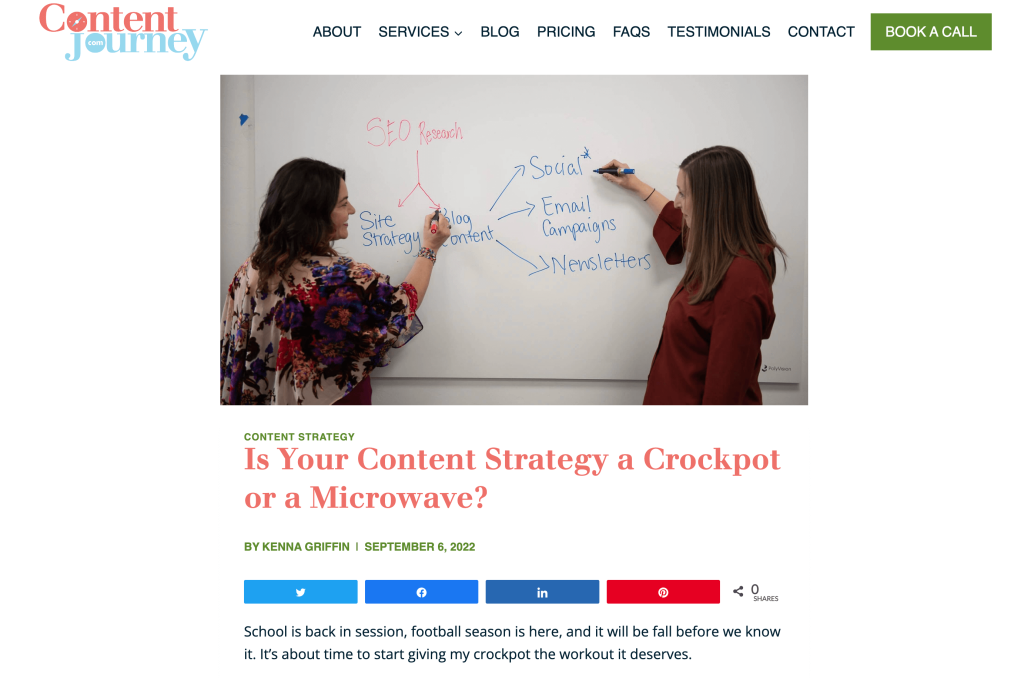
Check out my piece on our Founder Lindsey Miller’s theory about content strategy as a crockpot or microwave. Even if you don’t know Lindsey and her love of cooking, you see a lot of her personality here. Plus, the post takes a complex issue (content strategy) and explains it in terms most people can understand and relate to.
Add Visuals
Visuals don’t just break up the gray in your content, although that’s an essential purpose. They also make people pay more attention to what you’ve written. More than 40% of bloggers say they get the strongest results from posts with more than 10 images. The same blog reports that posts with more than seven images get 116% more organic traffic than those without.
Pay Attention to SEO
It seems valuable content should be an “if you build it, they will come endeavor,” but it’s not. You must still follow SEO content marketing best practices to help people find your posts. If you don’t pay attention to SEO, you’re really just doing half of the work. You’re leaving it up to chance that people will find your content instead of helping guide them to it.
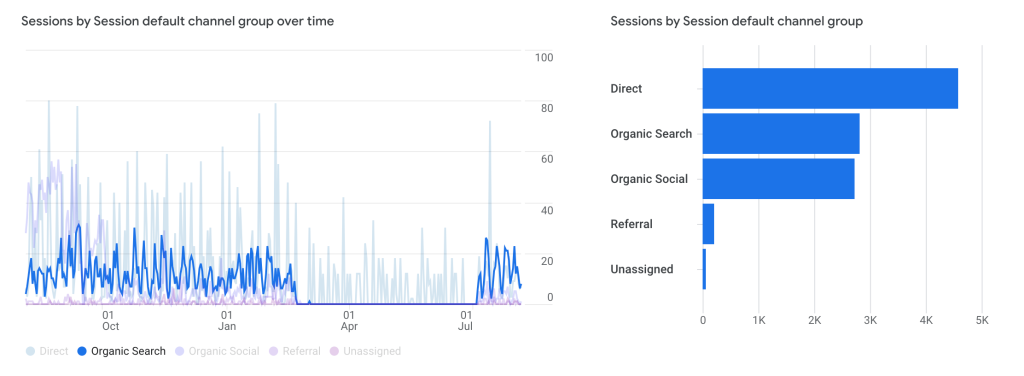
This graph is an example of why organic search matters. It leads a lot of traffic to this site.
Promote Your Content
Speaking of leaving things to chance… don’t just rely on the robots to send readers to your website. Do your part to get them there by promoting your content on your social media platforms, in your newsletter, and via email. Do what you can to help your content get seen.
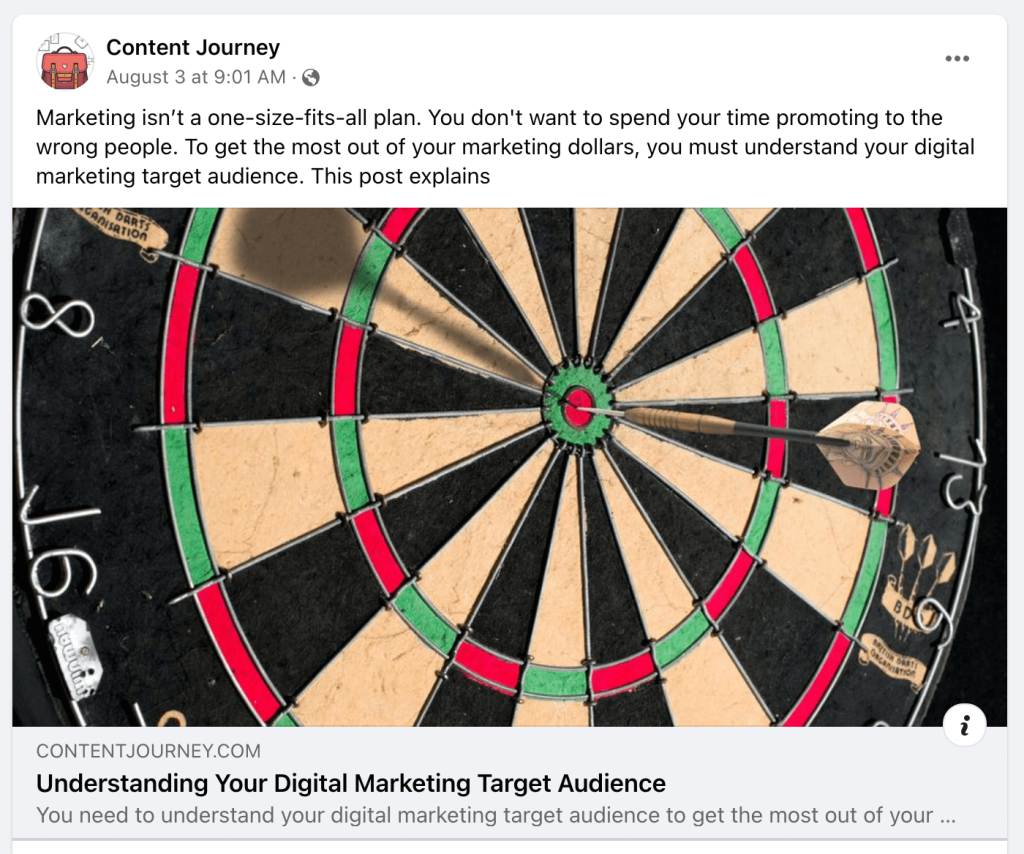
5 Things to Avoid When Creating Valuable Content
We’ve given you a lot to consider when it comes to creating valuable content and how to do it well. Now let’s talk about what not to do. Avoid these five things when creating valuable content.
1. Writing for the Wrong Audience
It may be tempting to write to the audience you wish you had or maybe even that your competitor has. Don’t fall into this trap. Write for the ideal audience for your brand. Create a persona for a typical audience member and address them in every piece you create.
2. Using Industry Jargon
If you can’t state it in simple terms that anyone can understand, then you don’t understand it well enough. Industry jargon may be the norm when talking to your colleagues and peers, but it’s not helpful when you’re writing to a more general audience. Using fancy words and intellectual jargon might make you feel smart, but it confuses your audience. The result is that they don’t trust you or don’t think your product or service is for them.
3. Making It About You
The content on your website isn’t about you. It’s also not about your products or services. It’s about your audience. Write to and for them. Making it about you or focusing on what’s amazing about your brand takes the focus away from your audience and their needs. They’ll find another brand that speaks directly to them and addresses their pain points.
4. Sacrificing Quality
Sticking to a publication schedule is vital to strong SEO and connecting with your audience regularly, but don’t just put content out there. If you focus only on your content calendar, you may end up putting out posts that don’t fit your audience’s needs or represent your brand well. True, not every post is going to end up No. 1 in Google search results, but you want to be proud of each post you publish. Don’t sacrifice quality for quantity.
5. Staying Safe
Sometimes you just need to try something new. Mixing up your post format, topics, or even writers can help keep your blog fresh and bring new ideas to your site. Your readers want to be comfortable with what they’ll get when they visit your site, but that doesn’t mean posting the same ‘ole thing. Have an idea? Give it a try and see what happens! You may find that the video you posted instead of long-form content is your more valuable piece of content to date.
How to Measure Content Value
So, you think the content you’re creating is valuable, but how do you really know? The proof is in the data. How well the content performs on your site is a direct reflection of how valuable it is to your audience.
To measure content value, review:
- Website Traffic. How many people read the post? The number of visitors to your content immediately indicates its popularity. You can track metrics like page views, unique visitors, and sessions to gauge the traffic your content is attracting.
- User Engagement. You can use metrics such as time on page, bounce rate, and pages per session to understand how users interact with your content. A high bounce rate may indicate that visitors don’t think your content is useful. A longer time on page suggests users are engaging more deeply with your content.
- Conversion Rates. If the goal of your content is to drive conversions (e.g., product purchases, sign-ups, downloads, etc.), the conversion rate is a critical value measure.
- Social Shares and Engagement. Social shares can indicate how valuable your audience finds your content. They likely find it useful or engaging if they’re willing to share it with their network. The number and nature of comments and other engagement (think: likes) can also provide insight into your content’s value.
- SEO Ranking. If your content ranks high, search engines think it’s valuable and authoritative.
- Backlinks. If other sites link to your content, it’s a strong signal of value. It shows that other people find your content useful and relevant enough to link to it from their sites.
Let Content Journey Help
Researching to truly understand your audience, their needs, and what specifically they search for online can be challenging. Once that’s done, you add in the difficulty of creating content that links those things to your brand in a helpful, valuable way. Let Content Journey help make those connections for your audience. We’re content marketing experts, so you don’t have to be. Book a call today to learn how Content Journey can help you use valuable content to serve your audience and grow your business.







